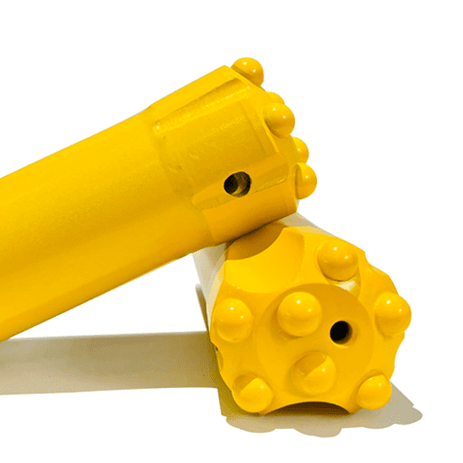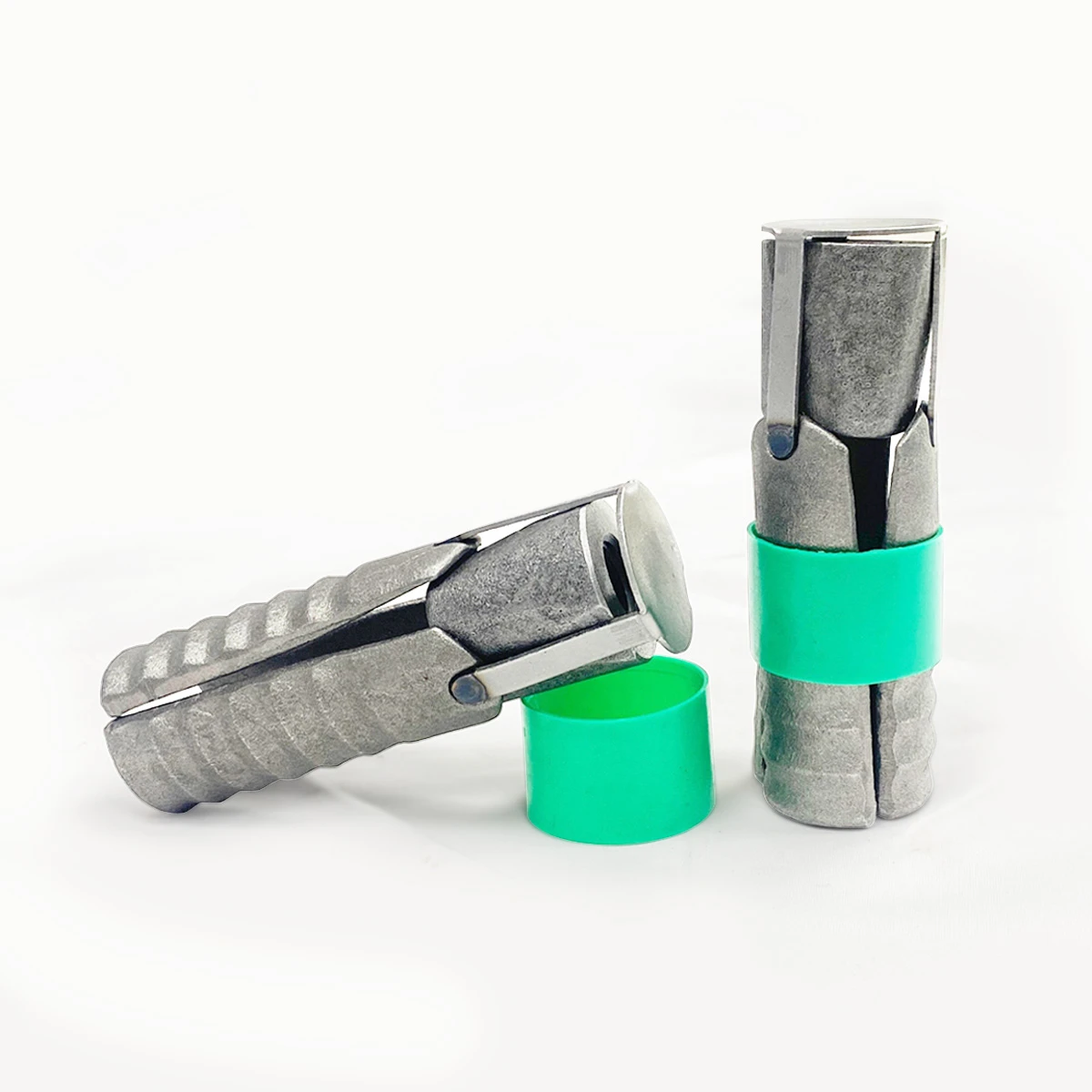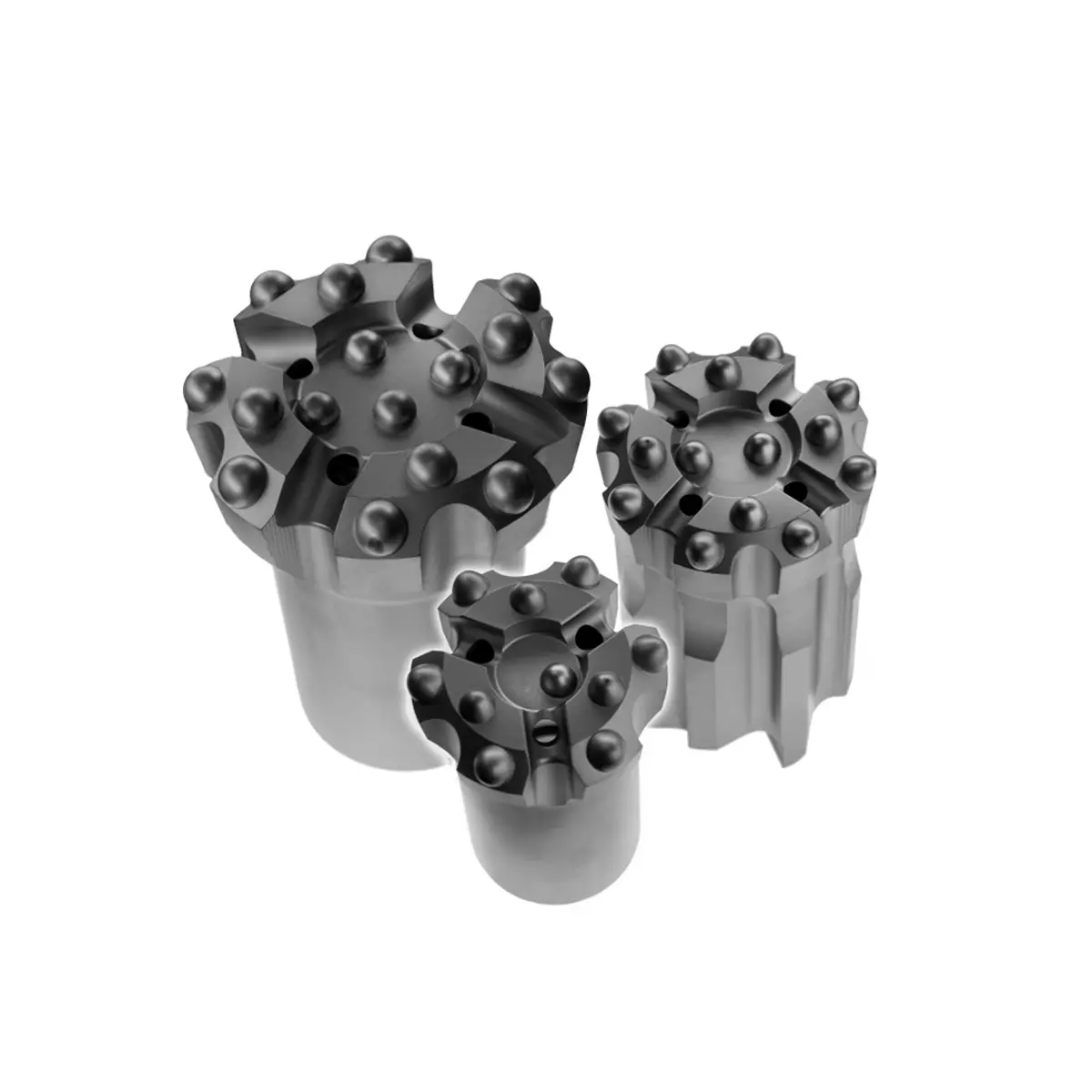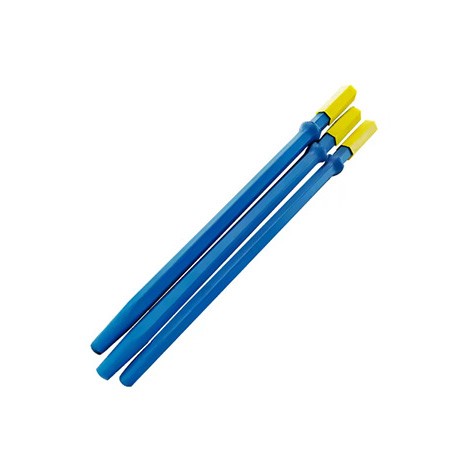Getting ready to hang a picture, assemble furniture, or tackle a bigger construction job? Knowing the right drill bit size for your screws and anchors is key to a successful and sturdy result. This article will guide you through the simple steps to always pick the perfect drill bit, making your projects easier and stronger.
Drilling holes might seem simple, but using the wrong drill bit can lead to wobbly furniture, pictures falling off walls, or even bigger headaches on construction sites. In this guide, we'll break down how to determine the size of drill bit to use for any project, whether you're working with screws or wall anchors. We’ll cover everything from understanding drill bit size to choosing the right drill bit for different materials, ensuring your projects are solid and secure every time. Let's dive in and make sure you always drill holes like a pro!
1. Why is Picking the Right Drill Bit Size So Important for Your Project?
Imagine trying to fit a square peg in a round hole – frustrating, right? Using the wrong drill bit size is just like that, but for your DIY and construction projects. It might seem like a small detail, but the size of your drill bit is super important for getting things done correctly and safely.
When you’re working with screws or anchors, the hole you drill needs to be just right. If you drill a hole that’s too small, you’ll struggle to get the screw or anchor in. You might even break the screw, damage the material you’re drilling, or strip the screw head. On the other hand, if the hole is too big, the screw won’t grip properly, and your project will be wobbly and weak. Think about hanging a heavy mirror – if the wall anchor isn’t secure because the hole is too large, that mirror could come crashing down!
Using the right drill bit means your screws and anchors will fit snugly and hold firmly. This makes your projects stronger, safer, and last longer. Whether you're assembling furniture, building a deck, or working on a construction site, taking the time to choose the right drill bit is a simple step that makes a big difference. It’s really empowering to know what you’re doing and get it right for your project the first time!
2. What Happens If You Use a Drill Bit That's Too Small for Your Screw or Anchor?
Using a drill bit that’s too small is a common mistake, especially if you’re a beginner. You might think a smaller drill is safer, but it can actually cause more problems in the long run. So, what exactly happens when your drill bit is undersized?
First off, you’ll have a tough time driving the screw or anchor into the hole. It will feel like you’re forcing it, and you’ll probably have to use the drill with a lot more pressure. This extra force can easily strip the head of the screw, making it impossible to tighten or remove. Imagine trying to screw in a bolt and the top just gets ruined – now you have a mess to deal with!
Secondly, a hole that’s too small puts a lot of stress on the screw itself. The screw might snap in half, especially if you’re working with harder materials or longer screws. This is not only frustrating but also means you have to start over, potentially damaging your materials further.
For anchors, a hole that’s too small can prevent the anchor from expanding properly. Wall anchors, for example, need space to spread out and grip the wall. If the hole is too tight, the anchor won’t work as it’s designed to, and it won’t hold the weight it’s supposed to. You might end up with a loose anchor that wiggles around and doesn’t securely hold anything. In short, a hole that’s too small can lead to broken screws, damaged materials, and weak, unreliable fixings. It’s always better to err on the side of caution and make sure your drill bit is the right size.
3. Conversely, What's the Problem with Using a Drill Bit That's Too Big?
Okay, so we know a drill bit that’s too small is bad news. But what about using a drill bit that’s too big? Surely, a bigger hole is better than a smaller one, right? Actually, not really. Using a drill bit that’s too large can cause just as many problems, if not more.
The main issue with a hole that’s too big is that the screw or anchor won’t have anything to grip onto. Think of it like trying to put a small screw into a huge hole – it’s just going to wobble around and not hold anything in place. When you drive a screw into a hole that’s too wide, the threads of the screw won’t bite into the material properly. This means the screw will spin freely without tightening, and it won’t provide any holding power. Your pieces won’t be joined securely, and anything you’re building will be unstable.
With wall anchors, using a drill bit that’s too big is even worse. Wall anchors rely on a snug fit to expand and grip the wall. If the hole is too large, the anchor will just slip right through or spin around in the hole without catching. It won’t be able to expand and create a firm hold. This is especially dangerous when you’re hanging heavier items, as the anchor could fail completely, leading to accidents and damage.
Furthermore, drilling a hole that’s significantly larger than needed can weaken the surrounding material, especially in softer materials like drywall or wood. You might end up with a messy, oversized hole that’s difficult to fix. So, while it might seem easier to err on the side of a larger drill bit, it’s crucial to get the size just right. A hole that’s too big means weak connections, unstable structures, and unreliable fixings – definitely “you don’t want” that!
| Problem | Drill Bit Too Small | Drill Bit Too Big |
|---|---|---|
| Driving Screw/Anchor | Difficult, requires force | Easy, but no grip |
| Screw/Anchor Condition | May strip, snap, or break | Spins freely, doesn't tighten |
| Holding Power | Potentially okay if forced, but risky | Very weak or non-existent |
| Anchor Expansion | Restricted, may not work | Slips or spins, ineffective |
| Material Damage | Possible cracking or splitting | Oversized hole, weakened material |
4. How to Determine the Size Drill Bit to Use for Screws: A Simple Guide?
So, how do you actually figure out the size drill bit to use for screws? It’s simpler than you might think! The key is to match the drill bit size to the diameter of the screw's shank, not the entire screw. The shank is the smooth, unthreaded part of the screw just below the head.
Here’s the rule of thumb: you want to pre-drill a hole that’s slightly smaller than the diameter of the screw's shank. This way, the threads of the screw can still bite into the material and create a strong hold, but you’re not forcing the screw into a hole that’s too small.
Here’s a step-by-step guide:
- Examine your screw: Hold your screw up and see the spiral threads. The shank is the smooth part right under the head before the threads start.
- Estimate the shank diameter: Visually estimate the diameter of the screw's shank. If you have different size of screws, do this for each one.
- Choose a drill bit: Select a drill bit that looks slightly smaller than the diameter you estimated. It’s always best to try a size that seems a bit too small first.
- Test on scrap material: Before drilling into your actual project piece, test your chosen drill bit and screw on a piece of scrap material of the same type.
- Drill a pilot hole: Pre-drill a pilot hole using the drill bit you selected.
- Drive the screw: Try driving the screw into the pilot hole.
- If the screw goes in easily and grips well: You’ve likely chosen the right drill bit.
- If the screw is hard to drive or gets stuck: The drill bit might be too small. Go up to the next size drill bit and try again.
- If the screw goes in too easily and doesn’t grip: The drill bit is probably too big. You’ll need to start over with a smaller drill bit or use a different fastening method.
For most woodworking and general DIY projects, a twist drill bit from your bit set will work perfectly. Remember, it’s always better to start with a smaller drill bit and go bigger if needed. As apartment therapy often advises, a little bit of testing can save you a lot of headaches!

A comprehensive drill bit set is essential for any DIY enthusiast or professional.
5. What Size Drill Bit to Use for Wall Anchors?
Choosing the right drill bit for wall anchors is a bit different than for screws. With wall anchors, you need to drill holes that are the exact size specified by the anchor manufacturer. Wall anchors are designed to fit snugly into a specific diameter of the hole so they can expand and grip the wall effectively.
Here’s how to determine the size drill bit for wall anchors:
- Check the anchor packaging: The packaging of your wall anchors will always tell you the size drill bit you need to drill. It’s usually written clearly on the box or bag. Make sure it’s easy to find – look for phrases like “Drill Bit Size,” “Bit Size,” or “Drill Size.”
- Look at the anchor itself: Sometimes, the size is even printed directly on the anchor. You might see numbers like “6 mm,” “8 mm,” or “10 mm” – these indicate the diameter of the hole required in millimeters (mm).
- Match the drill bit to the size: Once you locate the size, choose a drill bit that matches exactly. If the packaging says “Use a 6 mm drill bit,” then you need a drill bit that is precisely 6 mm in diameter.
- Drill the hole: Using the specified drill bit, carefully drill the hole to the correct depth. The anchor packaging might also indicate the required hole depth.
- Insert the anchor: Gently tap the wall anchor into the hole. It should fit snugly but not be forced. If it’s too tight, double-check that you used the right drill bit size.
It's crucial to use the right type of drill bit for the type of wall you’re working with. For drywall, a standard twist drill bit often works. For plaster or harder walls, you might need a drill with a masonry bit. If you’re drilling into concrete, you’ll definitely need a concrete drill bit and a hammer drill. Always know what you’re drilling into and use the appropriate screws and anchors for the type of material. Using the wrong type of drill or drill bit can damage your walls and make the anchors ineffective.

Expansion shell anchor bolts, commonly used in construction and mining, require precise drill hole sizes.
6. Are There Many Drill Bit Types I Should Know About?
Yes, there are many drill different types of drill bits, each designed for specific materials and purposes. Knowing about these different types of drill bits will help you choose the right one for each job, making your drilling more efficient and effective.
Here are some common drill bit types you should be familiar with:
- Twist Drill Bits: These are the most common and versatile drill bits. Made from hss drill steel, they’re good for wood, plastic, and light metals. They have a sharp point and spiral flutes to remove material. You likely have these in your standard bit set.
- Brad Point Drill Bits: Specifically designed for wood, these drill bits have a sharp point in the center that helps to accurately position the drill and prevent wandering. They create clean, precise holes in wood.
- Forstner Bits: Use a forstner bit when you need to drill flat-bottomed holes in wood, often for hinges or recessed hardware. They create very clean and accurate holes.
- Masonry Bits: These drill bits are for drilling into brick, concrete, and stone. They have a tough carbide tip that can withstand the impact of a hammer drill. You'll need a hammer drill to effectively use a masonry bit.
- Concrete Drill Bits: Similar to masonry bits but even more robust, concrete drill bits are designed for heavy-duty concrete drilling. They often work with SDS Plus drill systems for more powerful hammering action.
- Spade Bits (or Paddle Bits): Use spade bits for drilling large diameter holes in wood. They are flat with a pointed tip and cutting edges on either side. Good for quickly drilling holes for running wires or pipes.
- Hole Saws: These are used to cut large diameter holes in various materials, like wood, metal, and drywall. They look like cups with teeth and attach to a drill.
For most general tasks, a good set of twist drill bits and perhaps some masonry bits will cover your basic needs. As you get into more specialized projects, you might explore other types of drill bits. Understanding the bit designed for each material ensures you always use the right type and get the best results.

Specialized drill bits like these rock thread drilling bits are designed for heavy-duty applications.
7. What Type of Drill is Best for Pre-Drilling Holes?
The type of drill you use also plays a role in pre-drilling holes. While many drills can handle pre-drilling, some are better suited for certain tasks and materials. For most pre-drilling needs around the home or on construction sites, a standard cordless drill or a corded drill will work great.
Here are the main types of drills and their best uses for pre-drilling:
- Cordless Drill/Driver: This is the most versatile and common type of drill. Cordless drills are portable, easy to handle, and have adjustable speed and clutch settings. They are perfect for pre-drilling pilot holes for screws in wood, plastic, and light metal. For you’re a beginner, a cordless drill is an excellent starting point.
- Corded Drill: Corded drills offer more consistent power than cordless models and are ideal for longer or more demanding drilling tasks. They are great for pre-drilling larger holes or working with harder materials for extended periods.
- Hammer Drill: A hammer drill adds a hammering action to the rotation, making it effective for drilling into masonry, brick, and concrete. When you want to drill into these harder materials for anchors or fixings, a hammer drill is essential. You’ll need to use a masonry bit or concrete drill bit with a hammer drill.
- Drill Press: A drill press is a stationary drill mounted on a stand. It provides very accurate and consistent drilling, especially for repetitive tasks or when you need precise hole depth and angle. While less portable, a drill press is excellent for workshop projects and ensuring perfectly straight drill holes.
For basic pre-drilling of pilot holes for screws in wood and similar materials, a cordless drill is usually sufficient and convenient. If you’re working with tougher materials like masonry or concrete, or need to drill holes repeatedly and accurately, then a hammer drill or drill press would be more appropriate. Consider the material you’re drilling and the scale of your project when choosing the type of drill.
8. When Should You Pre-Drill Holes? Pro Advice for Perfect Holes.
Pre-drilling holes is a crucial step for many projects, and pro advice always recommends it in certain situations. Knowing when to pre-drill can prevent problems like wood splitting, stripped screw heads, and misaligned fixings. So, when should you pre-drill?
Here are key times when pre-drilling is highly recommended:
- Working with Hardwoods: Hardwoods like oak, maple, or walnut are dense and prone to splitting if you drive screws directly without pre-drilling. Always pre-drill pilot holes in hardwoods to prevent splitting and ensure screws go in straight and smoothly.
- Driving Large or Long Screws: Larger and longer screws require more force to drive. Pre-drilling reduces the resistance, making it easier to drive these screws without stripping the heads or breaking them.
- Screwing Near Edges: When driving screws close to the edge of wood or other materials, there’s a higher risk of splitting. Pre-drilling pilot holes near edges is essential to prevent cracks and ensure a clean, strong joint.
- Using Wall Anchors: As discussed earlier, pre-drilling is always necessary for wall anchors. You need to drill holes of the specific size recommended for your anchors to ensure they function correctly and hold securely.
- Metal Drilling: When drilling into metal, pre-drilling with a smaller drill bit can make it easier to drill larger holes and helps to center the larger bit. It also reduces strain on your drill and drill bits.
- Anytime You're Unsure: If you’re ever unsure whether to pre-drill, it’s always better to err on the side of caution and pre-drill a pilot hole. It takes just a few extra seconds and can save you from potential problems and rework.
Pre-drilling isn’t always necessary for softwoods like pine when using small screws, but it’s a good habit to get into, especially as you’re building your DIY skills. Think of pre-drilling as an insurance policy for your projects – it helps ensure clean, strong, and professional-looking results every time. As apartment therapy gurus would say, a little pre-drill preparation goes a long way!

Tapered drill pipes are used in various drilling applications, often requiring pilot holes.
9. How Can You Always Choose the Right Drill Bit Size? A Rule of Thumb.
Choosing the right drill bit size might seem tricky at first, but there’s a simple rule of thumb that can guide you every time, especially when working with screws. Remember, for screws, you want to pre-drill a hole that matches the diameter of the screw's shank.
The Rule of Thumb:
- Hold the screw up to your drill bit set: Visually compare the shank of the screw to your drill bits.
- Select a drill bit that looks slightly smaller than the shank: You want a drill bit that’s just a smaller diameter than the smooth part of the screw.
- Test the size: Drill a hole in scrap material and try driving the screw. If it goes in smoothly and grips well, you’ve got the right drill bit.
For a more precise approach, especially if you’re working on critical projects:
- Measure the shank diameter: Use calipers to accurately measure the diameter of the screw's shank in mm.
- Choose a drill bit slightly smaller: Select a drill bit that is slightly smaller than your measurement. For example, if the shank is 4 mm, you might choose a 3.5 mm drill bit.
- Check drill bit markings: Drill bits often have their size engraved on the shank. It’s likely engraved in mm or inches. Locate the size marking to make sure it’s the right one.
- Always test: Even with measurements, always test your chosen drill bit and screw on scrap material first to confirm you’ve selected the right size.
This rule of thumb and these simple steps will help you consistently choose the right drill bit size, whether you’re working with wood screws, metal screws, or any other type of screw. Practice makes perfect, and soon you’ll be able to eyeball the right drill bit almost instinctively! Remember, as power drill universe experts suggest, taking a moment to choose the right drill bit is always time well spent.
10. Looking for Reliable Drill Bits and Anchors? Choose a Factory Direct Supplier.
When it comes to self-drilling anchor systems and drilling tools, quality and reliability are paramount. Whether you are a construction company, a mining company, or a tunneling contractor, you need drill bits and anchors you can trust to perform under pressure. That’s where choosing a factory-direct supplier like us, Jiufu, comes in.
As a factory with 7 production lines based in China, we specialize in producing high-quality self-drilling anchor systems and a comprehensive range of drilling tools. We understand the demands of B2B customers in industries like construction and mining. Our products are built with high-quality materials, ensuring they are reliable and durable, and compliant with international safety standards. We export to main markets including the USA, North America, Europe, and Australia, meeting the rigorous demands of these regions.
Why choose a factory-direct supplier like Jiufu?
- Competitive Pricing: By buying directly from the factory, you eliminate middlemen and get more cost-effective pricing, which is especially important for large-scale projects. Like Mark Davis, a company owner and procurement officer in the USA, many of our customers appreciate the balance of quality and competitive prices.
- Quality Control: As the manufacturer, we have complete control over the production process. Our 7 production lines ensure consistent quality, and we adhere to strict quality inspection protocols. We understand key concerns like quality inspection and certifications (e.g., ISO standards) are crucial for our customers.
- Comprehensive Product Range: From anchor bars and anchor bits to anchor nuts, anchor couplers, anchor plates, centralizers, and various types of rock bolts including split set rock bolts and Swellex anchor bolts, we offer a wide array of products to meet all your needs. We also provide fiberglass bolts, resin and cement cartridges, mesh straps & plate washers, thread bars, tapered drill rods, extension drill rods, drill button bits, integral rods, and shank adapters.
- Efficient Communication: We understand the pain points of inefficient communication. Dealing directly with us means clearer, faster communication and responsiveness to your specific needs.
- Reliable Logistics: We have experience exporting to major global markets and understand the importance of timely shipments to avoid project delays. We focus on providing reliable logistics and payment methods to ensure smooth transactions.
For businesses looking to source cost-effective and high-quality self-drilling anchor systems and drilling tools, partnering with a factory-direct supplier like Jiufu is a smart choice. Visit our website https://www.cnrockbolt.com/ to explore our full product range and discover how we can support your projects with reliable and durable drilling equipment. Consider exploring our pages on Rock Drilling Bits, Self-drilling Hollow Anchor, and Shank adapters to see examples of our product offerings. Let Jiufu be your trusted partner in providing the right tools for your success.
Key Takeaways for Choosing the Right Drill Bit Size:
- Size Matters: The size drill bit is crucial for strong and secure fastenings.
- Shank Size for Screws: Match the drill bit size to the diameter of the screw's shank.
- Anchor Specs for Anchors: Always follow the manufacturer's size drill bit recommendations for wall anchors.
- Test First: Always test your drill bit and fastener on scrap material before working on your project.
- Know Your Materials: Use the right type of drill bit designed for the type of material you’re drilling.
- Pre-Drill Smart: Pre-drill pilot holes, especially in hardwoods, near edges, and for large screws and anchors.
- Factory Direct for Quality: For reliable drill bits and anchors, consider a factory-direct supplier like Jiufu for competitive prices and high quality.
By following these guidelines, you’ll be able to confidently choose the right drill bit size every time, ensuring your projects are strong, secure, and professionally finished. It’s a simple skill that’s it’s really empowering to master!
Post time: 1 月-23-2025














